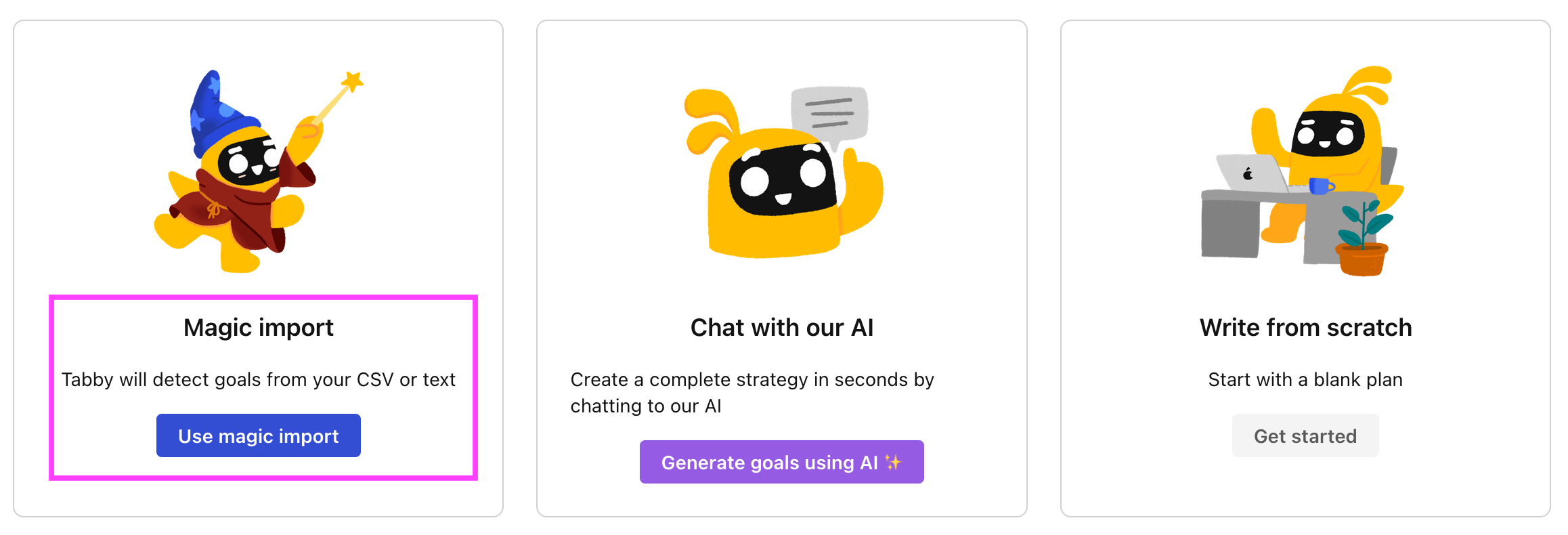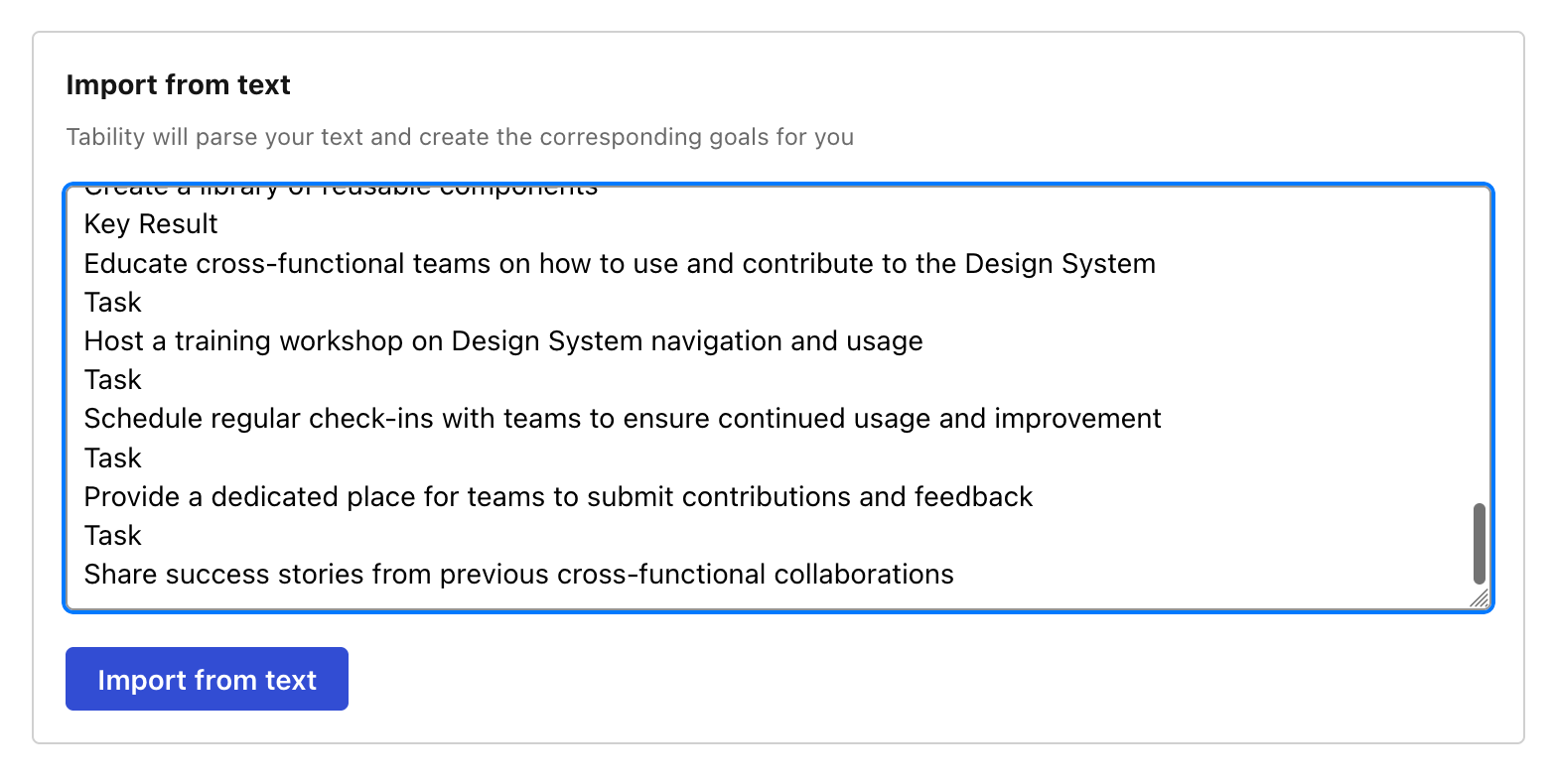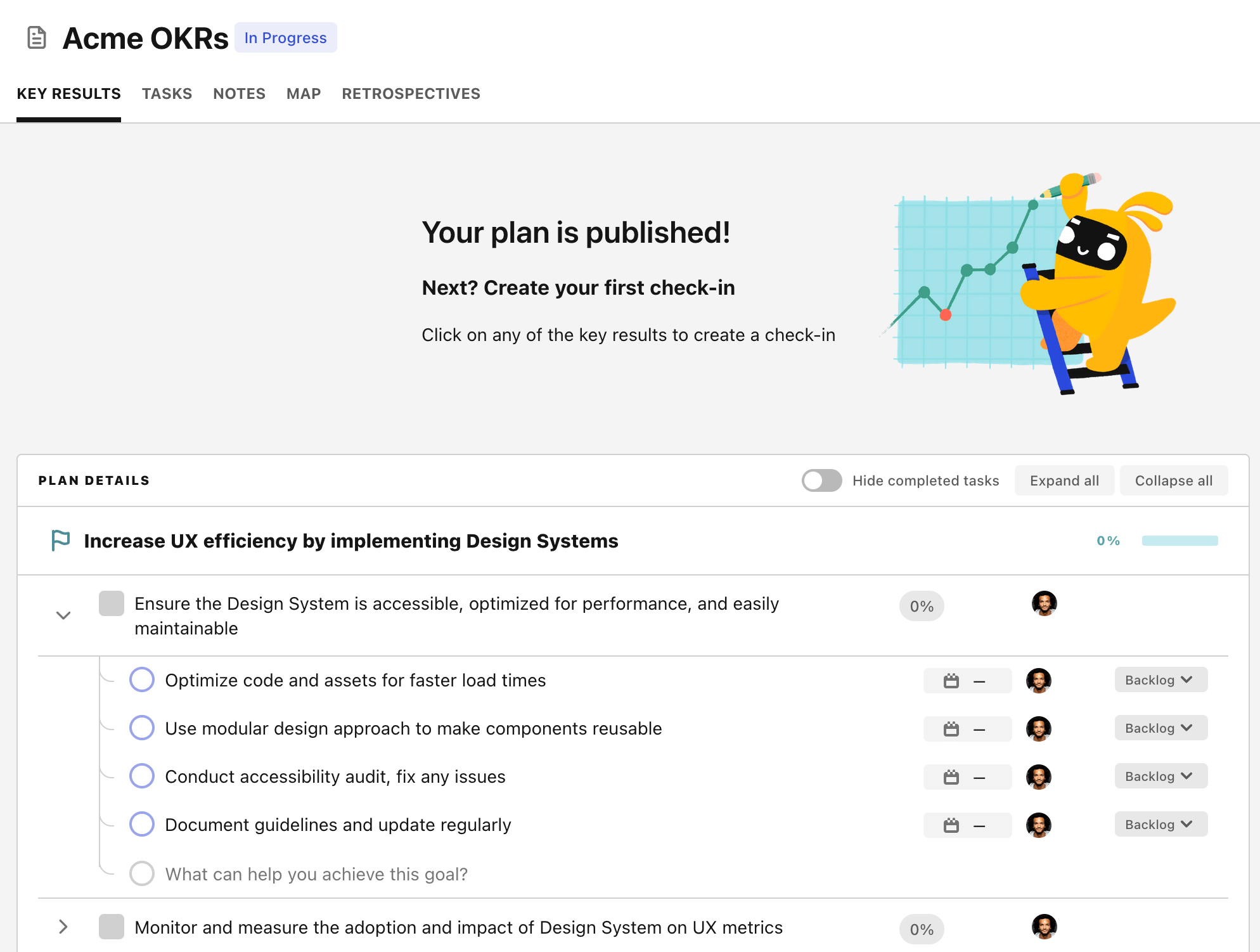OKR template to decrease CRM machine power failures by 10%
Your OKR template
These objectives necessitate several specific initiatives. Fixing vulnerabilities requires developing and implementing solutions for highest-priority issues, prioritizing vulnerabilities for immediate attention, and cataloging all existing vulnerabilities in CRM system power infrastructure. The training objectives will be met by implementing regular training schedules, developing in-depth training sessions on power-saving techniques, and assessing current skill levels of the technical team.
Meanwhile, implementing the predictive maintenance plan will involve training staff to execute the plan, creating a predictive maintenance schedule, and identifying common causes of unexpected power failures. Through these methods, reduced power usage and unexpected failures can dramatically save the power failures in CRM machines by 10%.
Engaging with this OKR will ultimately augment efficiency and reduce co-related setbacks. By identifying vulnerabilities and providing training, the technical team can proactively mitigate future power failures. Implementing a predictive maintenance plan will also ensure the continuous functioning of CRM machines while also anticipating and curbing unexpected failures.
ObjectiveDecrease CRM machine power failures by 10%
KRIdentify and fix 30% of identified vulnerabilities in CRM system power infrastructure
Develop and implement solutions for highest-priority issues
Prioritize vulnerabilities for immediate attention
Catalog all existing vulnerabilities in CRM system power infrastructure
KRTrain technical team on advanced power-saving usage of CRM machines to decrease failures by 15%
Implement regular technical team training schedules
Develop in-depth training sessions on power-saving techniques
Assess current skill levels of technical team on CRM machines
KRImplement a predictive maintenance plan to reduce unexpected power failures by 20%
Train staff to execute maintenance plan
Develop a predictive maintenance schedule
Identify common causes of unexpected power failures
How to edit and track OKRs with Tability
You'll probably want to edit the examples in this post, and Tability is the perfect tool for it.
Tability is an AI-powered platform that helps teams set better goals, monitor execution, and get help to achieve their objectives faster.
With Tability you can:
- Use AI to draft a complete set of OKRs in seconds
- Connect your OKRs and team goals to your project
- Automate reporting with integrations and built-in dashboard
Instead of having to copy the content of the OKR examples in a doc or spreadsheet, you can use Tability’s magic importer to start using any of the examples in this page.
The import process can be done in seconds, allowing you to edit OKRs directly in a platform that knows how to manage and track goals.
Step 1. Sign up for a free Tability account
Go tohttps://tability.app/signup and create your account (it's free!)
Step 2. Create a plan
Follow the steps after your onboarding to create your first plan, you should get to a page that looks like the picture below.

Step 3. Use the magic importer
Click on Use magic import to open up the Magic Import modal.
Now, go back to the OKR examples, and click on Copy on the example that you’d like to use.

Paste the content in the text import section. Don’t worry about the formatting, Tability’s AI will be able to parse it!

Now, just click on Import from text and let the magic happen.

Once your example is in the plan editor, you will be able to:
- Edit the objectives, key results, and tasks
- Click on the target 0 → 100% to set better target
- Use the tips and the AI to refine your goals
Step 4. Publish your plan
Once you’re done editing, you can publish your plan to switch to the goal-tracking mode.

From there you will have access to all the features that will help you and your team save hours with OKR reporting.
- 10+ built-in dashboards to visualise progress on your goals
- Weekly reminders, data connectors, and smart notifications
- 9 views to map OKRs to strategic projects
- Strategy map to align teams at scale